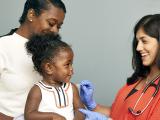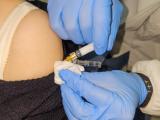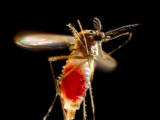Apr 8, 2013
Bangladeshi toddler dies of H5N1 avian flu
Bangladesh has confirmed H5N1 avian flu in a 23-month-old boy, the country's seventh case since 2008 but its first H5N1 fatality, Bangladesh's Institute of Epidemiology, Disease Control and Research (IEDCR) reported yesterday. The boy, from Comilla District in the southeastern part of the country, died on Feb 18, but officials didn't have the results of polymerase chain reaction testing from the US Centers for Disease Control and Prevention until 2 days ago. He had no typical features of influenza-like illness, the IEDCR said. Detailed investigation found that there was a "strong epidemiological link with backyard poultry deaths," the agency said. "No other case was found among contacts during the investigation." Bangladesh's last three cases were in early 2012, and the country has confirmed seven since 2008, according to World Health Organization (WHO) data.
Apr 7 IEDCR report
Study finds pandemic plans can't be 'one size fits all'
People respond more strongly to factors present in their everyday environment than to official pandemic directives, concluded a review of community response to the 2009 H1N1 pandemic in Influenza and Other Respiratory Viruses. The authors conducted a systematic literature review from March 2009 to August 2011 for cross-sectional or repeated population surveys that reported on community response. Their goal was to determine whether behavioral responses during the pandemic, including pharmaceutical and nonpharmaceutical mitigation strategies, were related to people's level of knowledge about the pandemic, their perception of its severity, and their perceived level of concern. The researchers included 19 studies from 14 countries covering a wide range of cultural settings; 14 reported on pandemic knowledge, 14 on levels of concern and risk perception, and 18 on pandemic-related behaviors. Awareness of the pandemic was found to be high, but specific knowledge about it was moderate. Factors correlating with the adoption of recommended behaviors were increased risk perception, older age, increased knowledge about the pandemic, and female sex. Community responses were quite consistent across different countries, but responses among different populations within a single country differed widely, meaning a one-size-fits-all approach may not be effective, the authors stated. "Our findings suggest that even the best and most clearly communicated plans will be interpreted by the community in the light of how events actually work out," they said, adding that people will balance directives with their own risk assessments.
Apr 7 Influenza Other Respi Viruses abstract
Study: Non-O157 STEC illness on the rise in US
Reportedfood-related infections caused by non-O157 strains of Shiga toxin–producing Escherichia coli (STEC) have increased to levels comparable with O157 STEC, the most common strain, according to a new study in Foodborne Pathogens and Disease. US researchers with the Emerging Infections Program FoodNet Working Group studied FoodNet outbreak data from 2000 through 2010 and found 2,006 non-O157 STEC cases compared with 5,688 O157 cases. The rate of non-O157 cases, however, increased from 0.12 per 100,000 population in 2000 to 0.95 per 100,000 in 2010, while the rate of O157 cases dropped from 2.17 to 0.95 per 100,000. The six non-O157 serogroups most commonly reported were O26 (26%), O103 (22%), O111 (19%), O121 (6%), O45 (5%), and O145 (4%), which are the strains that the US Department of Agriculture began testing for in beef trim last year. Fewer non-O157 STEC cases were associated with outbreaks—7% versus 20% for O157—but more were associated with international travel (14% vs 3%).
Apr 6 Foodborne Pathog Dis abstract
Global dengue burden may be much higher than previously estimated
The global number of dengue infections might be almost quadruple current WHO estimates, according to a multinational study published yesterday in Nature. The researchers undertook "an exhaustive assembly of known records of dengue occurrence worldwide" and used a modeling framework to map global risk. They then paired the risk map with detailed longitudinal data from cohort studies and population data to estimate the 2010 public health burden of dengue. The team estimated that the world sees 390 million dengue infections annually, of which 96 million reach clinical or subclinical severity. This is almost four times the WHO's most recent estimates of 50 million to 100 million infections a year. Simon Hay, a Wellcome Trust senior research fellow at the University of Oxford, said in a Wellcome Trust press release, "We found that climate and population spread were important factors for predicting the current risk of dengue around the world. With globalisation and the constant march of urbanisation, we anticipate that there could be dramatic shifts in the distribution of the disease in the future: The virus may be introduced to areas that previously were not at risk, and those that are currently affected may experience increases in the number of infections."
Apr 7 Nature letter
Apr 7 Wellcome Trust news release



















